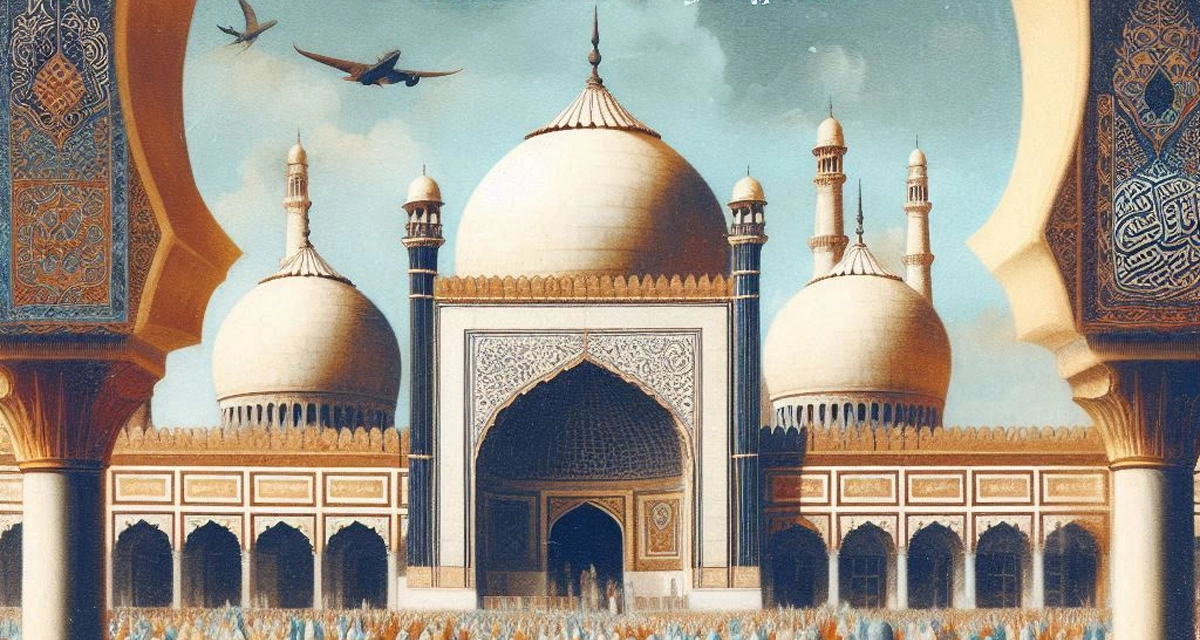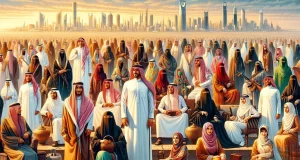Understanding Arab identity is crucial for appreciating the rich tapestry of cultures, histories, and traditions that define the Arab world. Arab identity is not monolithic; it encompasses a wide range of experiences, beliefs, and practices that have evolved over centuries. This article delves into the historical roots, cultural contributions, and contemporary challenges that shape Arab identity today.
Historical Context of Arab Identity
Pre-Islamic Era
Before the advent of Islam, the Arabian Peninsula was predominantly composed of tribal societies. These tribes, such as the Quraysh and the Ghassanids, formed the social and political backbone of the region. Tribal loyalty and kinship were paramount, dictating social norms and cultural practices. The pre-Islamic Arabs, often referred to as Bedouins, were known for their poetry, which played a vital role in preserving their history and traditions.
Islamic Era
The rise of Islam in the 7th century CE marked a transformative period for Arab identity. With the Prophet Muhammad’s teachings, Arab tribes unified under the banner of Islam, spreading their influence across the Middle East, North Africa, and beyond. This era saw significant cultural and scientific advancements, with Arab scholars contributing to fields such as mathematics, astronomy, medicine, and philosophy. The spread of Islam also facilitated the Arabic language’s rise as a lingua franca, further unifying diverse peoples under a shared cultural identity.
Geographical Spread of Arab Identity
Middle East and North Africa (MENA)
The core of the Arab world lies in the MENA region, encompassing countries like Saudi Arabia, Egypt, Iraq, and Morocco. This geographical expanse has created a diverse cultural landscape, where each region contributes unique elements to the broader Arab identity.
Diaspora Communities
Arab identity extends far beyond the MENA region, with significant diaspora communities in Europe, the Americas, and Asia. These communities maintain their cultural practices and languages while also integrating aspects of their host countries’ cultures, creating a dynamic and evolving sense of identity.
Influence of Geography on Culture
Geographical features such as deserts, rivers, and seas have profoundly influenced Arab culture. The desert’s harsh environment fostered a sense of resilience and resourcefulness, while fertile regions like the Nile Valley became centers of ancient civilizations and cultural exchange.
Language as a Unifying Factor
The Role of Arabic Language
Arabic, with its classical and colloquial forms, serves as a cornerstone of Arab identity. Classical Arabic, used in religious texts and formal settings, provides a sense of unity and continuity across generations and regions.
Dialects and Regional Variations
Despite the unifying role of Arabic, regional dialects vary significantly. These dialects reflect the local histories, cultures, and interactions with other languages and peoples, adding layers of richness to the Arab identity.
Religious Influence on Arab Identity
Islam’s Central Role
Islam plays a central role in shaping Arab identity. The religion’s teachings influence social norms, legal systems, and daily practices. Key religious practices, such as the Five Pillars of Islam, are integral to the lives of many Arabs.
Presence of Other Religions
While Islam is predominant, the Arab world is also home to diverse religious communities, including Christians, Jews, and Druze. These communities contribute to the region’s cultural mosaic, enriching the collective Arab identity.
Cultural Contributions
Literature and Poetry
Arab literature, especially poetry, has a long and celebrated history. Poets like Al-Mutanabbi and writers such as Naguib Mahfouz have left an indelible mark on global literature. Their works explore themes of love, honor, and the human condition, resonating with readers worldwide.
Music and Arts
Music and arts are vibrant aspects of Arab culture. Traditional instruments like the oud and darbuka create distinctive musical sounds, while contemporary Arab artists blend modern styles with classical influences, showcasing the culture’s dynamic nature.
Culinary Traditions
Arab cuisine is renowned for its diversity and flavor. Dishes like hummus, falafel, and shawarma have gained international popularity, while traditional feasts and culinary customs remain an integral part of social and family life.
Modern Arab Identity
Impact of Colonialism
The colonial period had a profound impact on Arab identity, disrupting traditional structures and imposing new political and social systems. The struggle for independence and subsequent nation-state formation reshaped regional identities and aspirations.
Post-Colonialism and Nation-State Formation
In the post-colonial era, newly independent Arab states embarked on nation-building projects, fostering a sense of national identity alongside broader Arab identity. This period also saw significant political and social transformations.
Contemporary Political Dynamics
Today, the Arab world faces complex political dynamics, including conflicts, revolutions, and reforms. These challenges impact how Arabs perceive their identity and their place in the world.
Social Structures and Family
Importance of Family
Family remains a central pillar of Arab society. Extended family networks provide support and maintain social cohesion, reflecting deep-rooted cultural values.
Gender Roles
Traditional gender roles are evolving, with increasing opportunities for women in education, employment, and leadership. However, cultural expectations and social norms continue to shape gender dynamics.
Social Hierarchies
Social hierarchies, often based on tribal affiliation, wealth, and education, influence social interactions and opportunities within Arab societies.
Economic Aspects
Historical Trade Routes
Historically, Arabs played a crucial role in global trade, with routes connecting Asia, Africa, and Europe. This trade fostered cultural exchange and economic prosperity.
Oil Economy
The discovery of oil in the 20th century transformed many Arab economies, bringing wealth and development but also creating economic dependencies and challenges.
Modern Economic Challenges
Today, Arab economies face issues such as diversification, unemployment, and regional disparities. Efforts to address these challenges are critical for future stability and growth.
Education and Knowledge
Historical Centers of Learning
Throughout history, Arab centers of learning like Baghdad, Cairo, and Cordoba were renowned for their scholarship and intellectual contributions.
Modern Educational Systems
Modern Arab educational systems vary widely, with efforts to improve access, quality, and relevance to contemporary needs.
Contribution to Global Knowledge
Arab scholars and scientists continue to contribute to global knowledge, advancing fields such as medicine, engineering, and the humanities.
Challenges to Arab Identity
Globalization
Globalization presents both opportunities and challenges for Arab identity, fostering cultural exchange while also posing threats to traditional practices and values.
Political Conflicts
Ongoing political conflicts and instability in some regions impact the collective sense of identity, displacing populations and disrupting cultural continuity.
Migration and Identity Crisis
Migration, both within and outside the Arab world, can lead to identity crises as individuals navigate new cultural landscapes while maintaining ties to their heritage.
Arab Identity in the Global Context
Stereotypes and Misconceptions
Arab identity is often subject to stereotypes and misconceptions, which can lead to misunderstandings and prejudices. Challenging these narratives is essential for fostering mutual respect and understanding.
Arab Contributions to Global Culture
From literature and science to cuisine and music, Arab contributions have significantly enriched global culture. Recognizing and celebrating these contributions helps bridge cultural divides.
Efforts for Cultural Preservation
Efforts to preserve Arab cultural heritage, through initiatives like UNESCO heritage sites and cultural festivals, play a vital role in maintaining and promoting Arab identity.
Media and Representation
Representation in Global Media
Global media representation of Arabs often falls into simplistic or negative stereotypes. Promoting diverse and accurate portrayals is crucial for a balanced understanding.
Role of Arab Media Networks
Arab media networks, such as Al Jazeera, provide platforms for Arab voices and perspectives, contributing to a more nuanced global dialogue.
Future of Arab Identity
Youth and Changing Perspectives
Arab youth, with their unique perspectives and aspirations, are key to the future of Arab identity. They balance respect for traditions with the desire for innovation and change.
Technological Influence
Technology plays a significant role in shaping modern Arab identity, facilitating connectivity and cultural exchange while also presenting new challenges.
Preserving Traditions Amid Change
Balancing tradition and modernity is a central theme in the future of Arab identity. Efforts to preserve cultural heritage while embracing change are vital for a resilient and dynamic identity.
Conclusion
Understanding Arab identity requires a nuanced appreciation of its historical roots, cultural richness, and contemporary challenges. By exploring these facets, we gain insight into the complex and dynamic nature of Arab identity. Recognizing the contributions and resilience of Arab peoples fosters greater respect and cooperation in our increasingly interconnected world.
FAQs
What is the core of Arab identity?
The core of Arab identity lies in a shared cultural heritage, language, and historical experiences. It encompasses diverse traditions, values, and practices that have evolved over centuries.
How has Arab identity evolved over time?
Arab identity has evolved through significant historical periods, including the pre-Islamic era, the rise of Islam, colonialism, and the modern nation-state era. Each period has contributed to shaping the multifaceted nature of Arab identity.
What challenges does Arab identity face today?
Arab identity faces challenges such as globalization, political conflicts, economic disparities, and migration. These factors impact cultural continuity and present opportunities and threats to traditional practices and values.
How do Arabs contribute to global culture?
Arabs have contributed to global culture through literature, science, cuisine, music, and more. Their historical and contemporary achievements continue to enrich global cultural and intellectual landscapes.
Why is understanding Arab identity important?
Understanding Arab identity is important for fostering mutual respect, cooperation, and appreciation in our globalized world. It helps combat stereotypes and misconceptions, promoting a more inclusive and informed perspective.




